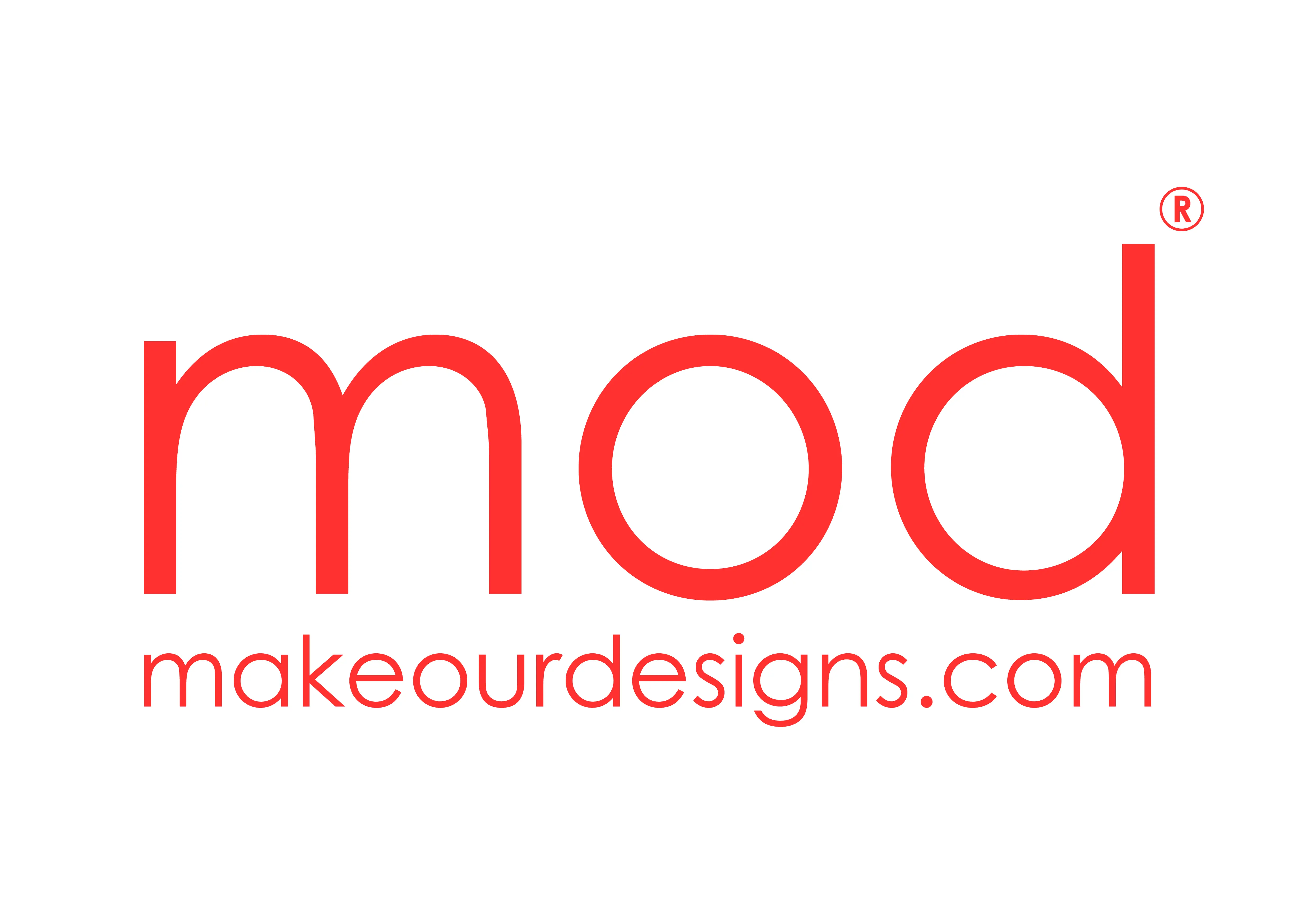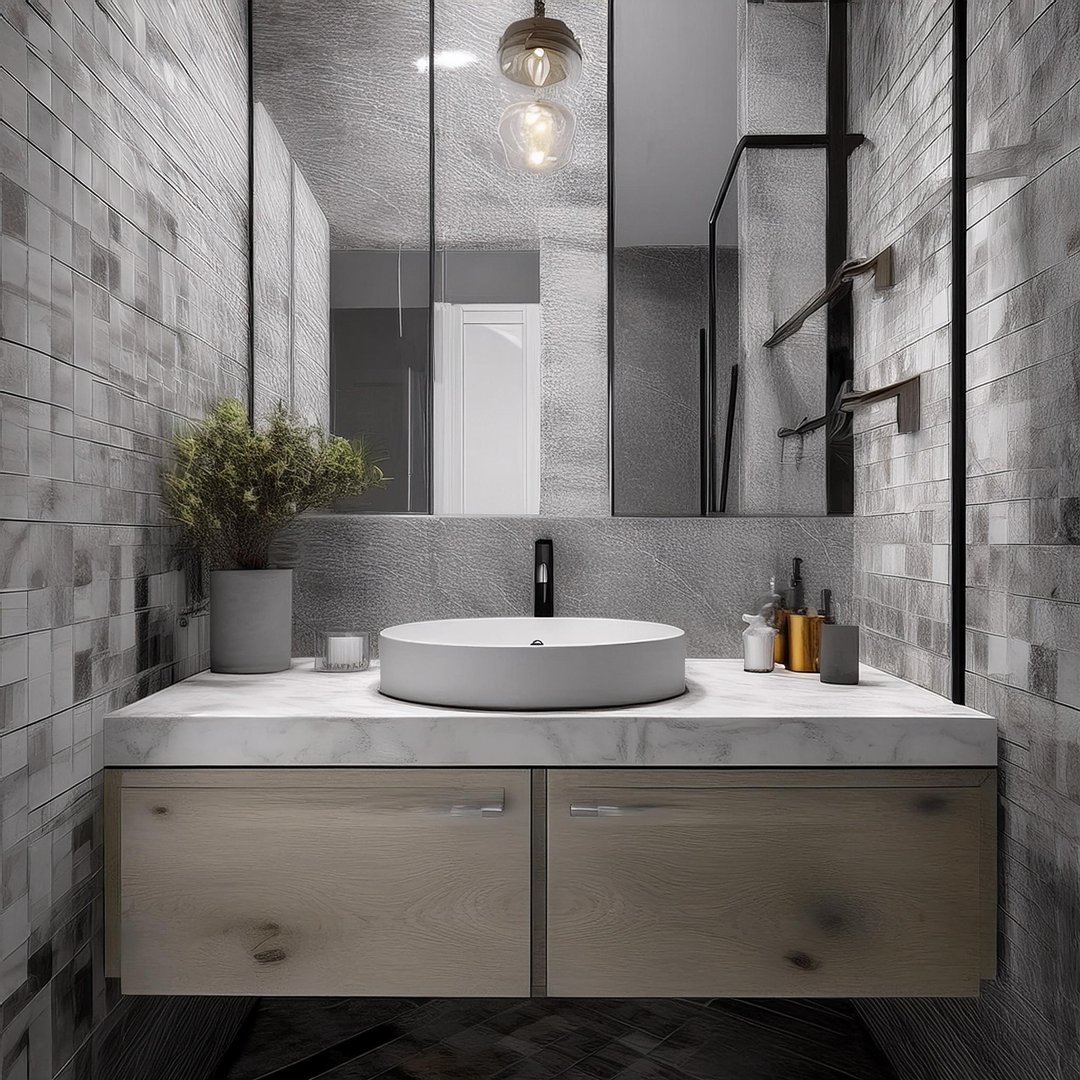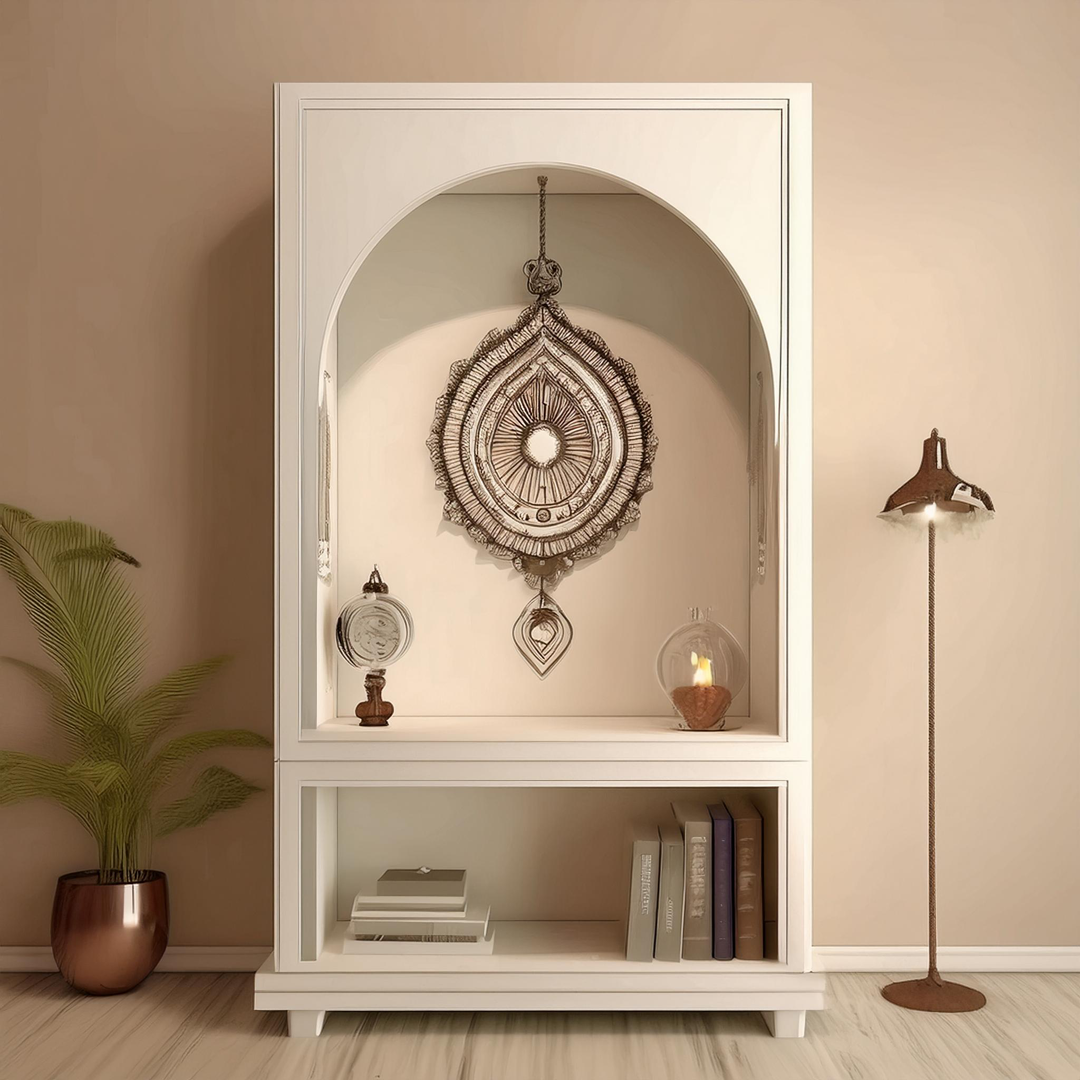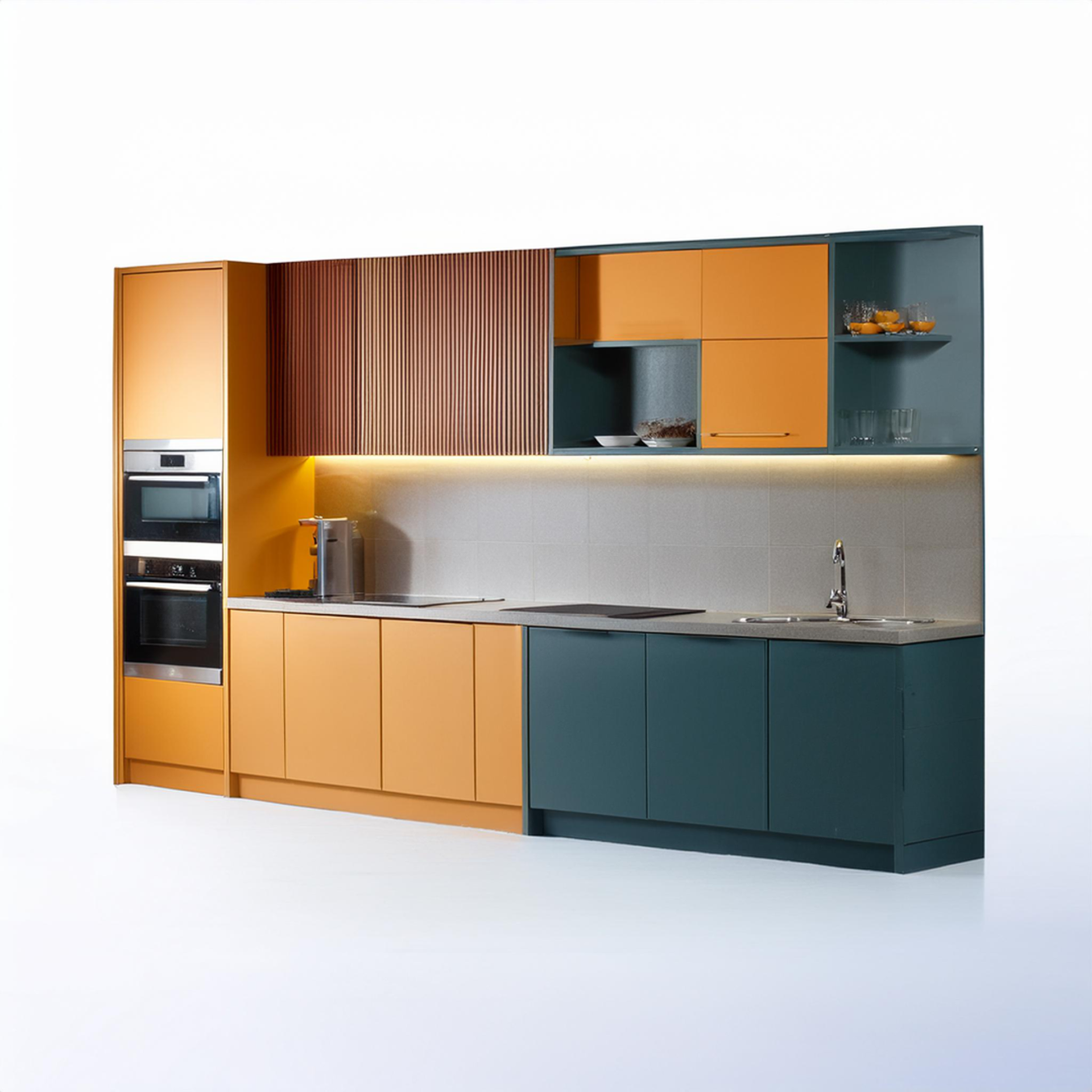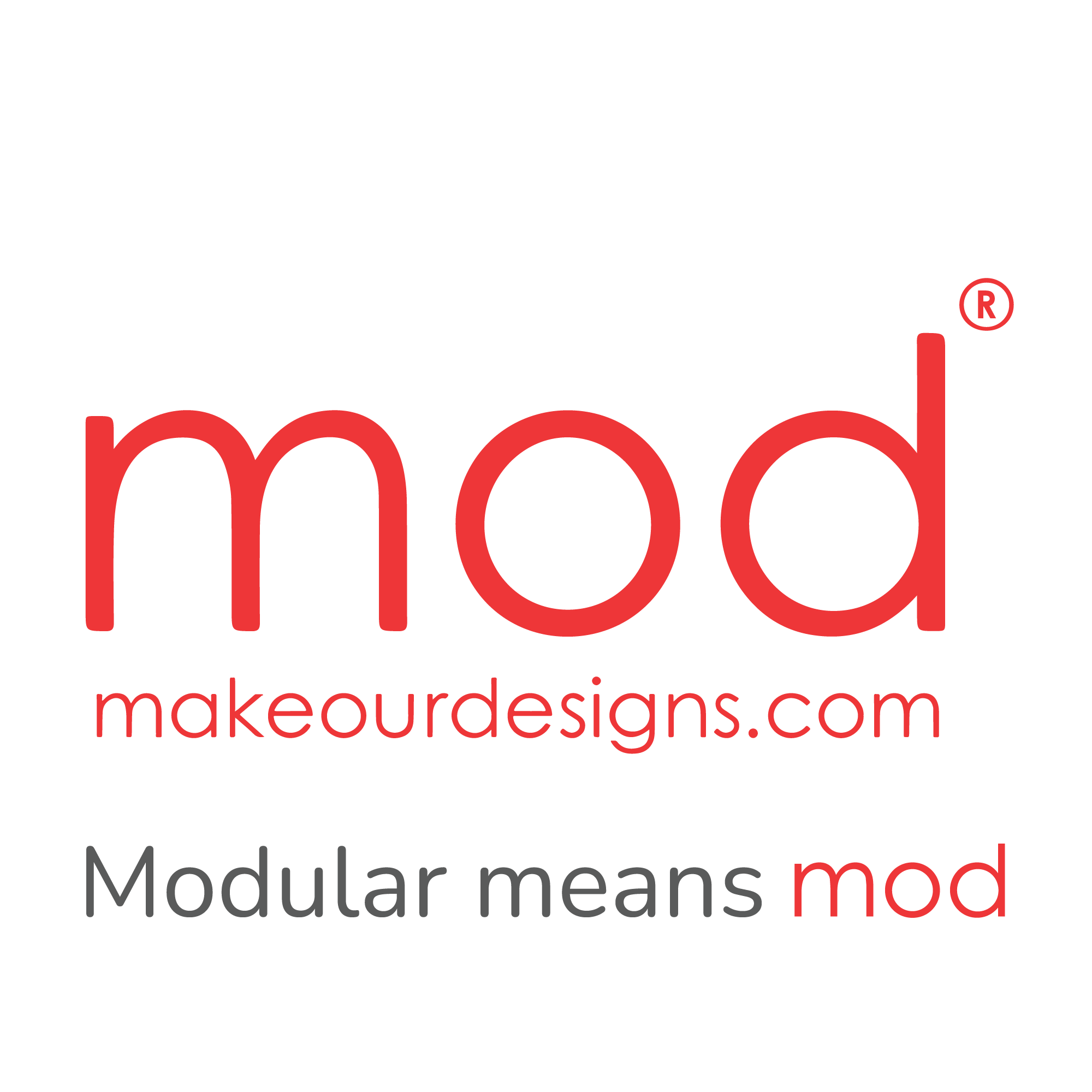A to Z of materials (modular)�
Carcass materials:�
Plywood:�
Plywood is engineered wood made using sheets of veneer pressed using resin.
Features:
– Under high temperature, plywood is bonded using resin using pre-pressed technology.
– To ensure protection from attack by micro organisms, plywood is treated using preservatives under vacuum pressure.
– To check anti-warp properties, there are specific stress receiving treatments given to plywood.
– This is slightly expensive but yet the most preferred material in the kitchen pertaining to its strength.
Common dimensions used:
– 8’ X 4’
Thickness used:
– 6mm
– 16mm
– 25mmm
Different variants of plywood:
– BWP or Boiling Water Proof Plywood:
Boiling water proof plywood is a grade that is made using phenol formaldehyde, which is nothing else but a synthetic resin and it can resist boiling water up 72hours.�
– BWR or Boiling Water Resistant:
Boiling water resistant plywood is made using phenol formaldehyde, which is also a synthetic plastic resin but this can resist boiling water up 48hours.�
– Moisture Resistant or MR:
For moisture resistant urea melamine formaldehyde resin is usually used to glue the individual plies together. MR or moisture resistant grade or popularly known as commercial plywood inmost widely used plywood for making furniture or in home offices.�
MDF or Medium Density Fibreboard:
A Medium-Density Fibreboard is made of small wooden fibres which are glue together with resins and is hot-pressed. This is the most budget-friendly option and comes in multiple finishes that can be put on top.�
Features:�
– Due to its homogenous structure MDF can ensure equal strength that is spread across in all directions.
– There are no knots or grains present in MDF.
– MDF can retain stability in multiple atmospheric conditions.
– MDF also has extremely high screw retention strength on its edges.
– MDF can be easily moulded, routed, carved and grooved like ‘Natural wood’.
– MDF can also be laminated, veneered, painted, coated, veneered and printed with PVC or polyvinyl chloride.
Common dimensions:�
– 4’ X 8’
Thickness used:�
– 18mm, 25mm
Particle Board:�
Particle board is made using sawdust and waste wood which makes it the cheapest material available in the market. Most preferred in the kitchen with light cooking and pressure.
Features:�
– Particle board is made using wood-chips which is bound by synthetic resin pressed under heat and pressure.
– It helps in decreasing landfills as it is made using residue of other engineered woods.
– Particle board is available in a variety of colours.
Common dimensions used:�
– 4’ X 8’
– 8’ X 6’
Thickness used:�
-18mm, 25mm
HDHMR or High Density High Moisture Board:�
HDHMR or High Density High Moisture Board is a basically an upgraded term of plywood which is used to develop tough and robust wooden usage. This is made by combining fibre chips, and forest wood waste which is made in big quantities during construction process.
Features:�
– HDHMR is used for high density of products.
– Water resistance characteristic are as per ISI Standards.
– To make HDHMR a special glue is used to make this product water resistant as per Indian climate.
– HDHMR has a ready to use and smooth surface.
Thickness used:�
-18mm
WPC or Wood Plastic Composite:
WPC or Wood Plastic Composites are materials made of wood fibre or wood flour and thermoplastic such as PVC or PP (polypropylene) and contains inorganic filler materials.
Features:
– WPC or wood-plastic composite is more environmentally friendly.
– WPC is also low maintenance.
– WPC can be moulded with or without simulated wood grain details.
– WPC is a solid wood component which is of rot-resistant species.
Shutter materials:�
Laminates:�
– Laminate is a multi-layer synthetic wood product created using high-density fibre, melamine resin and wood particles.
– For an enduring finish laminates come to the rescue as these are also pocket-friendly, heat and moisture resistant, perfect for a kitchen.
– Laminate has a photographic appliqué layer which is covered with a clear protective layer. This layer can imprint various images and imitate the appearance of real wood as well.
Membrane:�
– Membrane is made of a thermo foil or synthetic. Material which is a thin, tight, heat-sealed plastic wrap used to mould over an MDF substrate.
– Membrane comes in rolls of 1200mm width.
– It is a mix of durability and elegance when it comes to using it in your kitchen.
– Membrane is low-maintenance as it is easy to clean with a wet cloth and is not as expensive as an acrylic finish.
Acrylic:
– Acrylic refers to a family of synthetic, plastic materials containing derivatives of acrylic acid.
– Acrylic is a tough, highly transparent material with excellent resistance to UV rays and weathering.
– It has a highly reflective and glossy surface.
– Acrylic is waterproof.
– Acrylic can give kitchen a luxurious touch.
– Acrylic is one of the expensive variants in shutter finishes.
Glass:
– Glass does not need any core material and comes with aluminium extrusion frames.
– Glass can make the kitchen look airy and open.
– Glass is completely opaque.
– Glass is 4mm thick annealed with 50 micron thick coating.
– Glass is waterproof.
Lacquer:
– Lacquer finish is commonly used in kitchens due to its high resistance to staining.
– Lacquer finish is low on maintenance.
– Lacquer finish is made of high-quality glass and comes in a variety of colours.
– Lacquer is extremely durable as it doesn’t fade or loose its lustre over time.
Edge bands:�
– Carcass is 0.8 mm
– Matt finish laminate is 2mm
– Gloss finish laminate is 1.3mm
– Acrylic is 1.3mm
Kitchen Hardware:�
– Hinges- soft close and non-soft close
– Connectors and screws
– Height adjustable cabinet legs
– PVC skirting profiles
– Innotech drawer system
– Telescopic drawer channels and drawer systems
– Floating shelves brackets
– Top lift hydraulic mechanism
Kitchen Countertop:�
Granite:
It is a coarse-grained igneous rock which is hard and tough. In India, there is a wide variety of granite ranging in over 200 shades.
– Granite is durable and long lasting.
– Granite is heat, scratch, chemical and stain resistant.
– Granite is very low maintenance and very easy to clean.
– The edge of granite can be moulded, cut and polished in many different ways.
– Each slab of granite is different which is why uniformity is missing across the kitchen which makes each slab look unique.
– Granite has a labour-intensive installation and is expensive.
– Granite can crack when hit by a hard and sharp object.
Quartz:
Quartz countertops are man-made engineered stones. The countertops are formed 90% using ground quartz which is a natural hard mineral and using 8-10% resins, polymers and pigments.
– Quartz is extremely hard and durable.
– Quartz has a glossy sheen.
– Quartz has a wide range of colours.
– Quartz is non-porous and stain and crack resistant.
– It is easy to clean with mild soap, water and a soft cloth.
– Quartz is man-made which is why it is more uniform in colour and pattern.
– Quartz is more expensive than granite.
If you are looking to design a beautiful home let our experts do that for you, get a quote by Make our Designstoday!�
